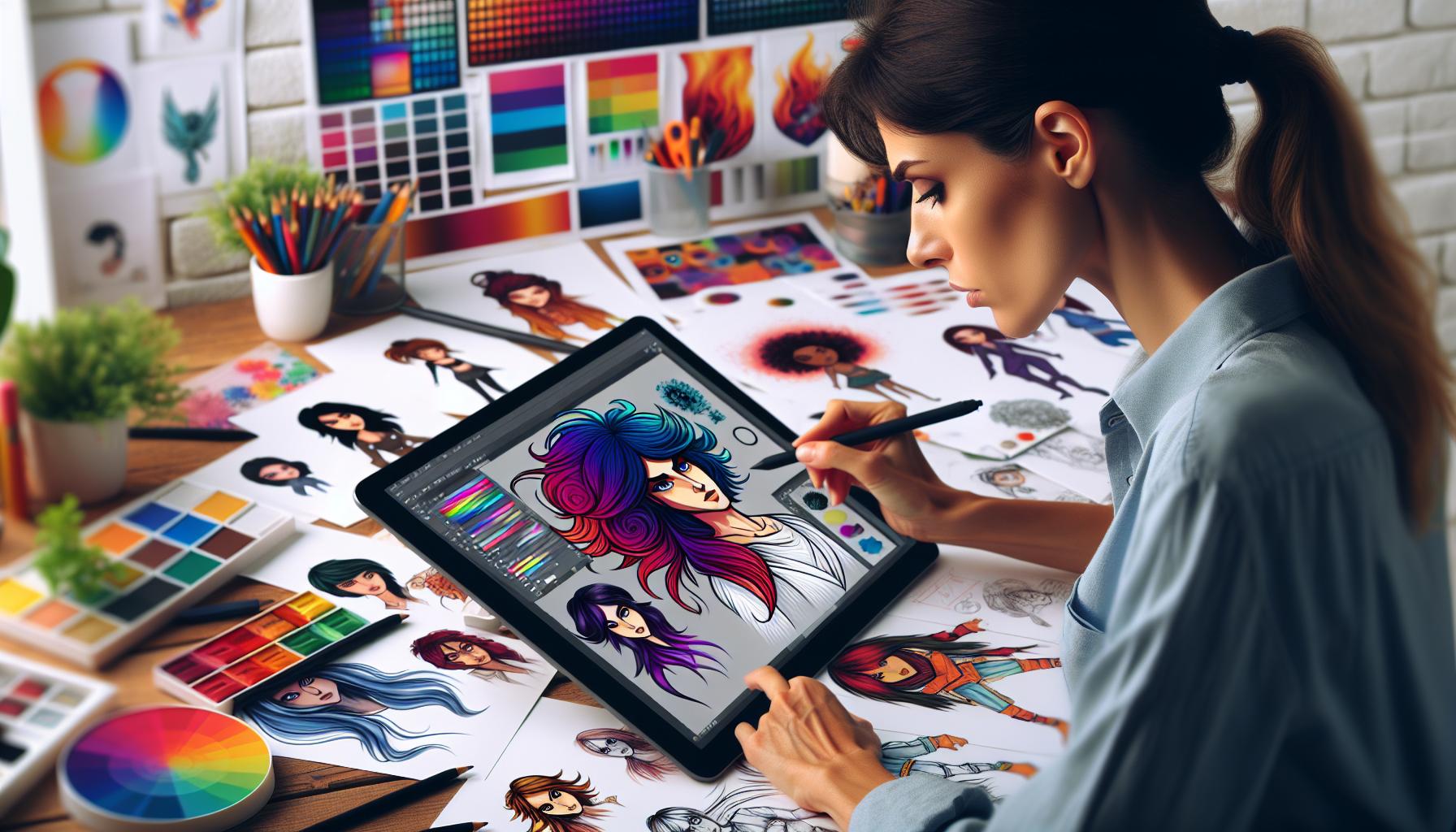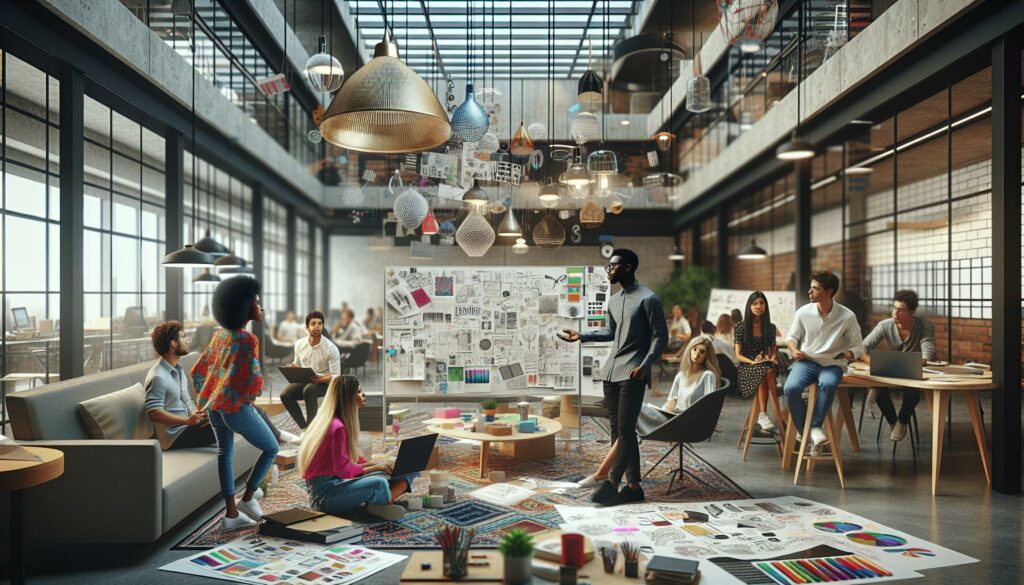Diving into the world of Adobe Illustrator character design is like stepping into a candy store for artists—colorful, exciting, and just a tad overwhelming. With its powerful tools and endless possibilities, Illustrator transforms mere ideas into eye-catching characters that leap off the screen. Whether you’re a seasoned pro or just starting out, it’s time to unleash your creativity and let your imagination run wild.
Adobe Illustrator Character Design
Adobe Illustrator provides a versatile platform for character design. Its array of tools empowers artists to create detailed illustrations. Vector graphics support precise manipulation, allowing for adjustments without losing quality. Designers utilize features such as the Pen Tool and Shape Builder Tool to craft unique characters.
Character design in Illustrator combines creativity with technology. Custom brushes offer additional textural options that enhance visual appeal. Artboards enable the organization of various character poses and expressions within a single project. Layer management fosters easy revisions, accommodating iterative design processes.
Many artists appreciate the ability to integrate color seamlessly. The Color Guide panel suggests harmonious color schemes, promoting aesthetic consistency. Gradients and transparency settings allow for depth and dimension, adding realism to two-dimensional designs.
Reference images can also be used to streamline the design process. Tracing over sketches provides a foundation for detailed work. Artists often employ layers to separate different components, making adjustments efficient and manageable.
Inspiration often stems from various sources. Observing popular media and cultural trends aids in developing relatable character designs. Community feedback plays a critical role in refining designs, ensuring they resonate with intended audiences.
Collaboration enhances the character design experience. Sharing work with peers offers fresh perspectives and constructive critiques. Online forums and social media platforms serve as valuable resources for advice and feedback.
Implementing these techniques in Adobe Illustrator can result in striking, memorable characters that stand out in any project.
Key Features of Adobe Illustrator

Adobe Illustrator offers a wealth of features that elevate character design. Its capabilities enable artists to create stunning illustrations with precision and ease.
Vector Graphics Capabilities
Vector graphics form the core of Adobe Illustrator’s functionality. These graphics allow for unlimited scaling without compromising quality. Artists can manipulate shapes and lines to refine their character designs extensively. Using vector graphics ensures that illustrations maintain crisp outlines and vibrant colors across various media. The ability to alter anchor points and paths contributes to creating intricate details in characters. Furthermore, Illustrator supports complex design elements, like curves and angles, making it an ideal choice for detailed illustrations.
Customization Tools
Customization tools in Adobe Illustrator enhance creativity and streamline workflows. The Pen Tool enables precise drawing and editing of paths, allowing designers to craft unique shapes for characters. Shape Builder Tool facilitates the combination and modification of shapes through an intuitive interface. Custom brushes give artists the freedom to apply varied textures and strokes, bringing characters to life. Adjusting gradients and transparency adds depth, resulting in dynamic visual effects. Layer management simplifies organizing character designs, allowing quick access to different poses and expressions. Together, these tools empower artists to implement their vision effectively and efficiently.
Step-by-Step Process of Character Design

A structured approach enhances the character design process in Adobe Illustrator. Each step builds on the last, ensuring a comprehensive creation journey.
Concept Development
Concept development forms the foundation of character design. Artists brainstorm ideas and sketch initial drafts to explore themes and characteristics. Researching reference images can inspire various styles and features, allowing designers to visualize their concepts effectively. Feedback from peers often refines these ideas, leading to stronger designs. Making use of mood boards helps categorize visual concepts and solidifies the overall vision.
Creating Basic Shapes
Creating basic shapes establishes the character’s core structure. Utilizing the Pen Tool facilitates precise lines and curves that shape the foundation. Artists often start with geometric forms to outline body parts and facial features. Adjusting anchor points ensures smooth transitions between shapes, enhancing overall proportions. Exploring the Shape Builder Tool aids in merging overlapping shapes seamlessly. This process lays the groundwork for a more intricate character design.
Adding Details and Textures
Adding details and textures brings characters to life. Incorporating facial expressions defines personality and emotion. Custom brushes elevate appearance, creating unique textures that enhance hair, clothing, and skin. Gradients can add depth, transitioning between colors gradually for a more realistic effect. Layer management proves essential in keeping the design organized, allowing for easy adjustments without disturbing other elements. Effective detailing ensures the character captures attention.
Tips for Effective Character Design

Effective character design combines various elements, including color theory and design consistency, to create visually appealing and memorable characters.
Color Theory and Application
Understanding color theory aids in selecting harmonious palettes that enhance character traits. Utilize the Color Guide panel for suggestions on complementary schemes. Combining warm colors evokes energy, while cool tones offer calmness. Implement gradients to add depth, creating a more dynamic appearance. For example, a vibrant orange can signify enthusiasm, while a subtle blue may convey serenity. Applying transparency settings introduces layers of realism, making characters feel multi-dimensional. Consistency in color usage throughout characters solidifies their identity across different contexts.
Design Consistency
Design consistency guarantees that characters maintain recognizable features and styling across various poses and expressions. Establish a cohesive style guide that outlines key attributes, such as proportions and color schemes. Utilizing the same custom brushes ensures uniform textures throughout different illustrations. Keep important elements like eye shapes and facial features consistent, as they contribute to character identity. For instance, repeating specific line weights enhances visual harmony. Consistent application of these design principles fosters familiarity with the character, making them more relatable to the audience.
Adobe Illustrator offers a dynamic platform for character design that sparks creativity and innovation. With its powerful tools and features artists can craft unique and memorable characters that resonate with audiences.
By mastering the Pen Tool and Shape Builder Tool along with effective color theory and design consistency artists can elevate their work to new heights. The integration of custom brushes and layer management further streamlines the design process making it easier to refine and enhance characters.
Embracing collaboration and community feedback enriches the creative journey. As artists explore the endless possibilities within Adobe Illustrator they’ll find themselves equipped to bring their imaginative visions to life.



